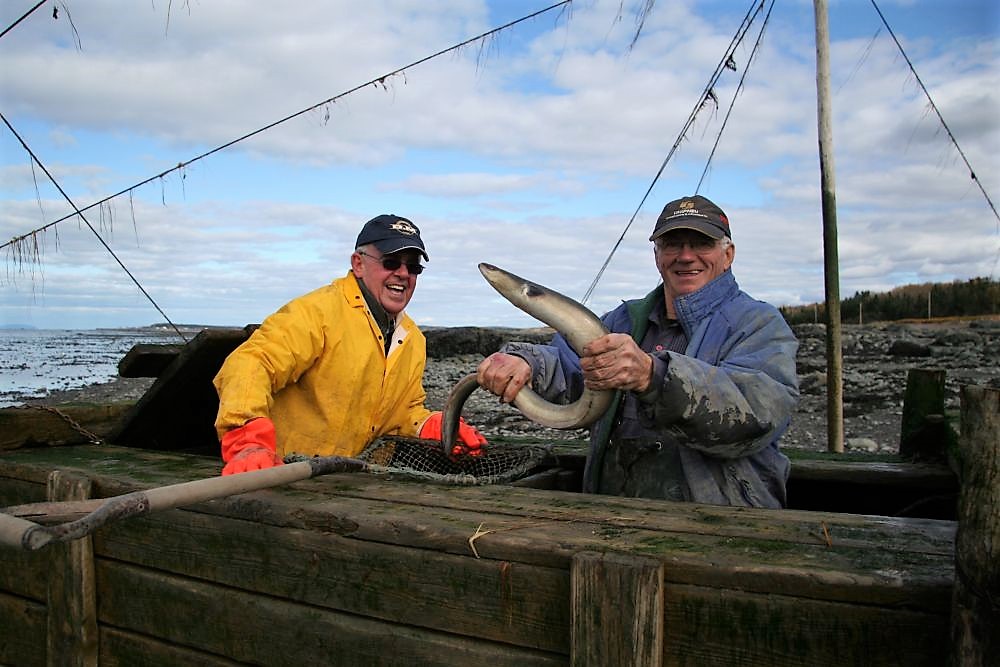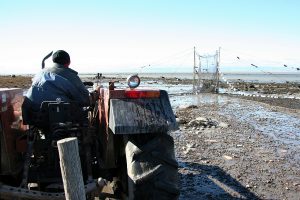The Fishing Season
I loved fishing season when I was a boy. I ran from one weir to another to see how many eels were in the collecting boxes.
Claude Duval, Saint-Jean-Port-Joli
The fishing season starts around September 20 and ends in the first few days of November. During that period, adult eels migrate to the Sargasso Sea. They leave their freshwater growth habitat and swim slowly down the St. Lawrence off the Côte-du-Sud. This allows them to become acclimatized to the water, which is initially brackish and then becomes salty.
A lot to do in a very short time
The fishers have to do several chores when the tide is low. They have to empty the collecting boxes, check their equipment and repair it, if necessary, within a short period of time. They also have to move the eels to holding tanks.
The fishing season is a period of intense work. The fishers are busy seven days a week, during the daytime and sometimes in the middle of the night, because they have to schedule their activities according to the tide.
The fishers usually use a tractor, with a trailer attached, to reach their weirs. They used to use horses and tumbrels (a kind of cart).
Contrary to horses and tumbrels, today’s motorized equipment is affected by salt water. Therefore, people always use their oldest tractor for eel fishing. Tractor headlights have now replaced the coal oil and gas lamps previously used after sunset.
Dealing with the wind and the tide
Fishers plan their inspection of the collecting boxes based on the direction and speed of the wind and the time of the tides. They do not follow any particular order from one day to the next. Hip boots and boot-foot waders are obviously required.
Let’s Empty the Traps – View this video with a transcript
Usually, the fishers start by emptying the collecting boxes that are closest to shore while the water recedes at the other end of the weir. When the water has receded completely, they check the collecting boxes that are furthest from shore. They then return to finish their work inshore.
When the fishers collect the eels, they always check the state of their fishing gear. They pay particular attention to the nets, removing any debris left behind by the tide. Some of the nets have to be re-attached to the poles or repaired. If necessary, planks are renailed into place and objects that are a source of pollution, especially those made of plastic, are collected. Seaweed and other debris blocking the entrance to the ansillons or contained in the bourroles and collecting boxes are also removed.
Inspecting and Repairing a Weir – View this video with a transcript
The fishers use a saillebarde to take the eels out of the collecting boxes, especially if the boxes still contain water. Otherwise, the fishers pick them up with their hands. Tongs or grappling hooks are no longer used because they injured the eels and sometimes affected their resale quality. After the eels have been removed from the collecting boxes, they are taken to holding tanks. If there are not very many, they are transported in jute bags. Otherwise, they are transported in a trailer.



